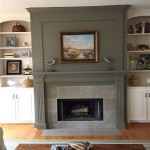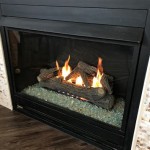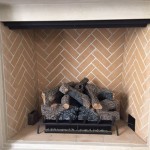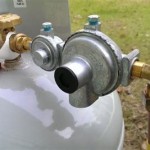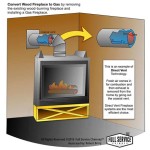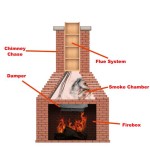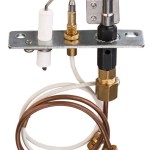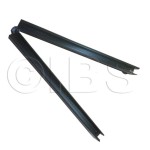Granite Fireplace Design: A Comprehensive Guide
The fireplace has long served as a focal point in homes, providing warmth, ambiance, and a touch of elegance. Among the various materials used in fireplace design, granite stands out as a durable, aesthetically versatile, and timeless choice. This article explores the various aspects of granite fireplace design, covering its benefits, design considerations, installation tips, and maintenance requirements.
The Enduring Appeal of Granite Fireplaces
Granite, an igneous rock formed from slowly cooling magma beneath the Earth's surface, boasts a unique combination of strength and beauty. Its inherent properties make it particularly well-suited for fireplace surrounds and hearths. First and foremost, granite’s exceptional durability allows it to withstand the high temperatures associated with fireplaces without cracking or warping. Unlike some other materials, granite resists heat damage, ensuring a long lifespan for the fireplace. Secondly, granite’s natural beauty offers a wide spectrum of colors and patterns. From light, speckled varieties to dark, veined stones, granite’s natural variations provide countless aesthetic possibilities. Each slab is unique, bringing a distinctive character to the fireplace. Finally, granite’s ease of maintenance adds to its practicality. Its non-porous surface resists staining and is simple to clean with mild soap and water.
Historically, granite has been a symbol of permanence and luxury, found in grand structures and monuments across civilizations. In the context of fireplace design, this association translates to a sense of sophistication and lasting value. A granite fireplace can become a central element of a room's design, enhancing its overall aesthetic appeal and increasing the property's value.
Design Considerations for Granite Fireplaces
When designing a granite fireplace, several factors must be carefully considered to achieve the desired aesthetic and functional outcome. These considerations range from the selection of the granite slab itself to the overall style and integration with the surrounding room décor.
Granite Color and Pattern: The selection of granite color and pattern is paramount. Darker granites, such as black or deep brown, tend to create a more dramatic and formal look, contrasting well with lighter walls. Lighter granites, like beige or gray, offer a more subtle and contemporary feel, blending seamlessly with neutral color palettes. The natural veining and patterns within the granite should also be considered. Bold patterns can become a striking focal point, while subtle variations offer understated elegance. Viewing actual slabs is crucial, as samples can only provide a general idea of the stone's appearance.
Fireplace Style: The style of the fireplace should complement the overall architecture and interior design of the home. A traditional fireplace might feature elaborate detailing, such as carved moldings and corbels, paired with a classic granite color. A contemporary fireplace, on the other hand, might opt for clean lines, minimalist design, and a sleek granite slab. The size and shape of the fireplace should also be proportionate to the room. A large, imposing fireplace might overwhelm a small space, while a small fireplace might be lost in a large room.
Hearth Design: The hearth, the area in front of the fireplace opening, is an important design element. It serves a functional purpose by protecting the floor from sparks and embers, but it also contributes to the overall aesthetic. The hearth can be made from the same granite as the surround, or from a contrasting material for visual interest. Consider the size of the hearth, its shape (rectangular, curved, or custom), and its height above the floor. A raised hearth can create a more dramatic presence, while a flush hearth offers a seamless transition.
Surround Detailing: The surround, the area immediately surrounding the fireplace opening, can be customized with various architectural details. These details might include mantels, pilasters, and decorative panels. The design should complement the granite and the overall style of the fireplace. A craftsman-style fireplace might feature natural wood accents, while a modern fireplace might incorporate metal or glass elements. Careful consideration should be given to the scale and proportions of these details to ensure a balanced and harmonious design.
Room Integration: The fireplace should be integrated seamlessly into the overall room design. Consider the surrounding wall color, furniture arrangement, and lighting. The fireplace should serve as a focal point, but it should not clash with the other elements in the room. Choose accessories, such as artwork and decorative objects, that complement the fireplace and enhance its aesthetic appeal. Proper lighting can highlight the granite's natural beauty and create a warm and inviting atmosphere.
Installation and Safety Considerations
Installing a granite fireplace requires careful planning and execution to ensure both aesthetic appeal and, more importantly, safety. The installation process involves structural considerations, precise measurements, and adherence to building codes.
Structural Integrity: Granite, being a heavy material, requires a structurally sound foundation. The existing fireplace structure should be assessed to ensure it can adequately support the weight of the granite surround and hearth. If necessary, reinforcement might be required to prevent structural issues. Consulting with a structural engineer is recommended, especially for larger granite installations or in older homes.
Precise Measurements: Accurate measurements are critical for a seamless installation. The dimensions of the fireplace opening, the surround, and the hearth must be carefully measured and verified. Templates can be created to ensure that the granite is cut and shaped to the correct specifications. Any discrepancies in measurements can result in gaps, misalignments, and an unprofessional final appearance. Professionals using laser measurement tools can provide a high degree of accuracy.
Professional Installation: Due to the weight and complexity of granite installations, professional installation is highly recommended. Experienced installers possess the specialized tools and knowledge required to handle the material safely and efficiently. They can also ensure proper alignment, secure attachment, and adherence to building codes. Attempting a DIY installation without the necessary expertise can lead to structural damage, safety hazards, and aesthetic flaws.
Adherence to Building Codes: Fireplace installations must comply with local building codes and regulations. These codes typically address issues such as fire safety, ventilation, and structural stability. Obtaining the necessary permits and inspections is essential to ensure that the fireplace meets all safety requirements. Ignoring building codes can result in fines, legal liabilities, and potential hazards.
Fire Safety: Ensuring adequate fire safety is paramount. The fireplace should be properly vented to prevent the buildup of dangerous gases. Smoke detectors and carbon monoxide detectors should be installed in the vicinity of the fireplace. The hearth should extend far enough to protect the surrounding floor from sparks and embers. Regular inspections of the chimney and flue are essential to ensure proper functioning and prevent fire hazards.
Maintaining Granite Fireplace Beauty and Longevity
Granite, while durable, requires proper care to maintain its beauty and longevity. Regular cleaning and preventative measures can help protect the granite from stains, scratches, and other forms of damage.
Regular Cleaning: Wipe down the granite surface regularly with a soft cloth and mild soap and water. Avoid using abrasive cleaners or scouring pads, as these can scratch the surface. For stubborn stains, use a granite-specific cleaner following the manufacturer’s instructions. Promptly remove any spills to prevent staining. Dusting regularly will prevent the build-up of grime.
Sealing: Although granite is naturally non-porous, sealing the surface can provide added protection against stains. Apply a granite sealer according to the manufacturer's instructions, typically every one to three years. Test the sealant in an inconspicuous area first to ensure it does not discolor the stone. Sealing provides a barrier against absorption, making cleaning easier.
Heat Management: While granite is highly resistant to heat, excessive or prolonged exposure to high temperatures can potentially cause discoloration or cracking over time. Avoid placing flammable objects directly on the granite surface. Consider using a fire screen to protect the granite from direct contact with flames and embers. Maintaining reasonable fire sizes will further mitigate potential heat damage.
Preventing Scratches: While granite is hard, it can still be scratched by sharp objects. Avoid dragging heavy or abrasive items across the surface. Place protective pads under furniture to prevent scratches. Exercise caution when handling fireplace tools to prevent accidental impacts. A sealant also offers a degree of scratch protection.
Professional Inspection: Schedule regular inspections of the fireplace by a qualified professional. The inspector can assess the condition of the granite, the chimney, and the flue, and identify any potential problems. Addressing minor issues promptly can prevent them from escalating into more serious and costly repairs. These inspections should include checks for cracks, discoloration, and structural integrity.

Autumnal Inspiration Fireplace Design Ideas

5 Granite Colors For Chic Modern Fireplace Msi Surfaces

9 Indoor Fireplaces That Will Bring Warmth And Charm To Your Home Swenson Granite 100 Natural Stones

5 Granite Colors For Chic Modern Fireplace Msi Surfaces

Blue Pearl Granite Facing Kit Mantels Direct

Stone Fireplace Ideas For Your Home In 2024 Marble Com

Stone Fireplace Ideas For Your Home In 2024 Marble Com

Black Granite Monolithic Fireplace Modern Living Room Portland Maine By Morningstar Stone Tile Houzz Au

5 Granite Colors For Chic Modern Fireplace Msi Surfaces

Modern Fireplace Design Stone Anoma
Related Posts

